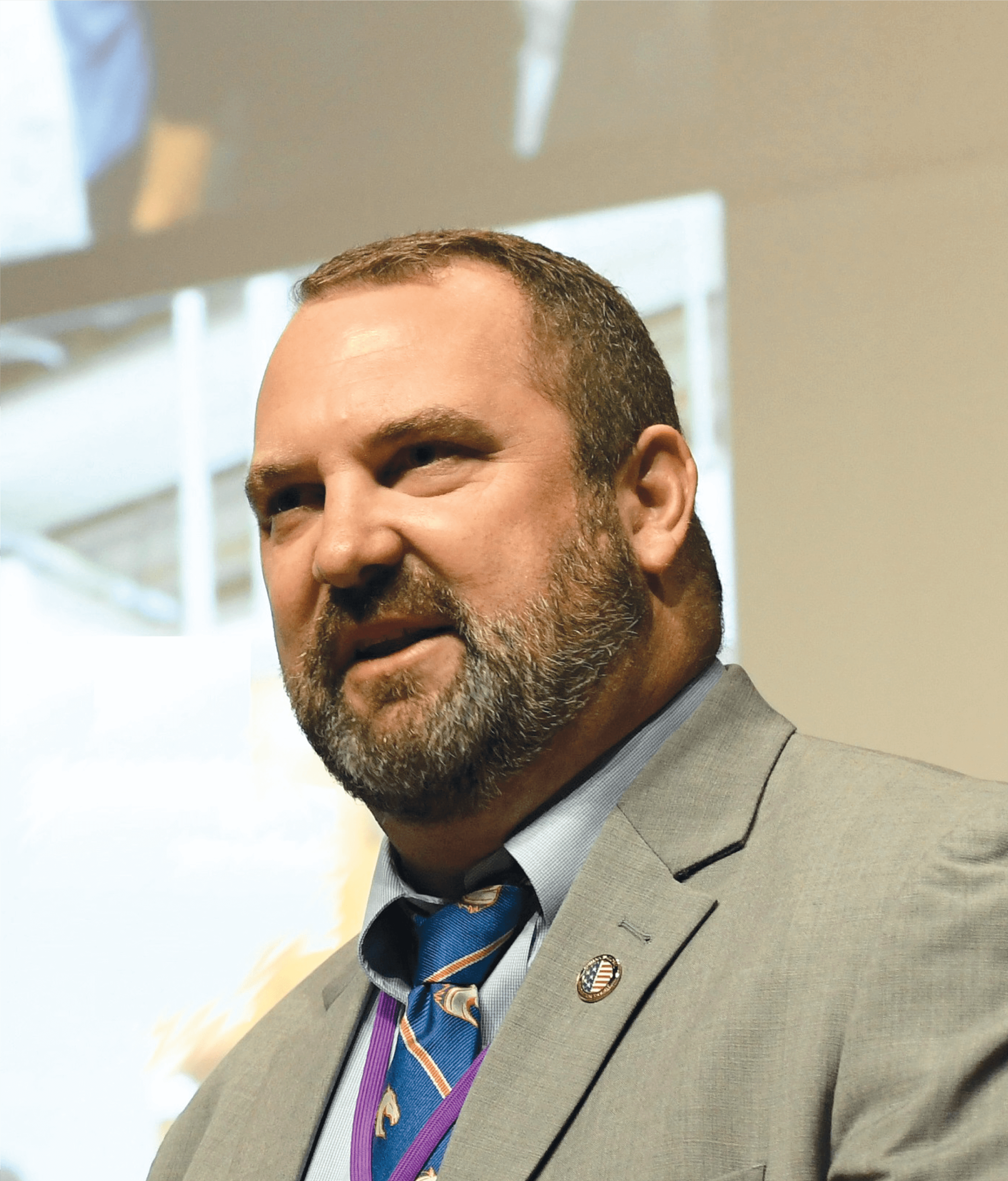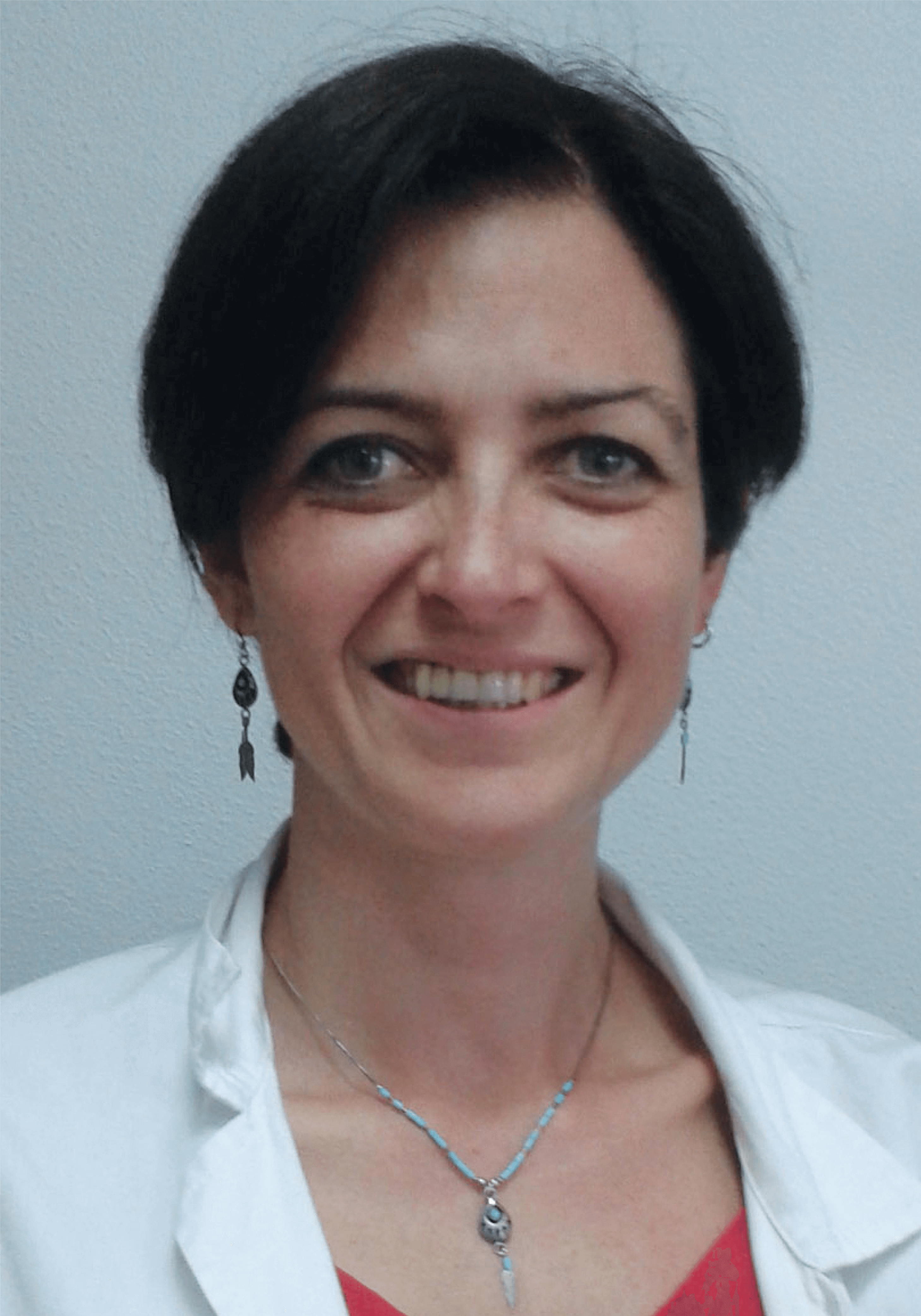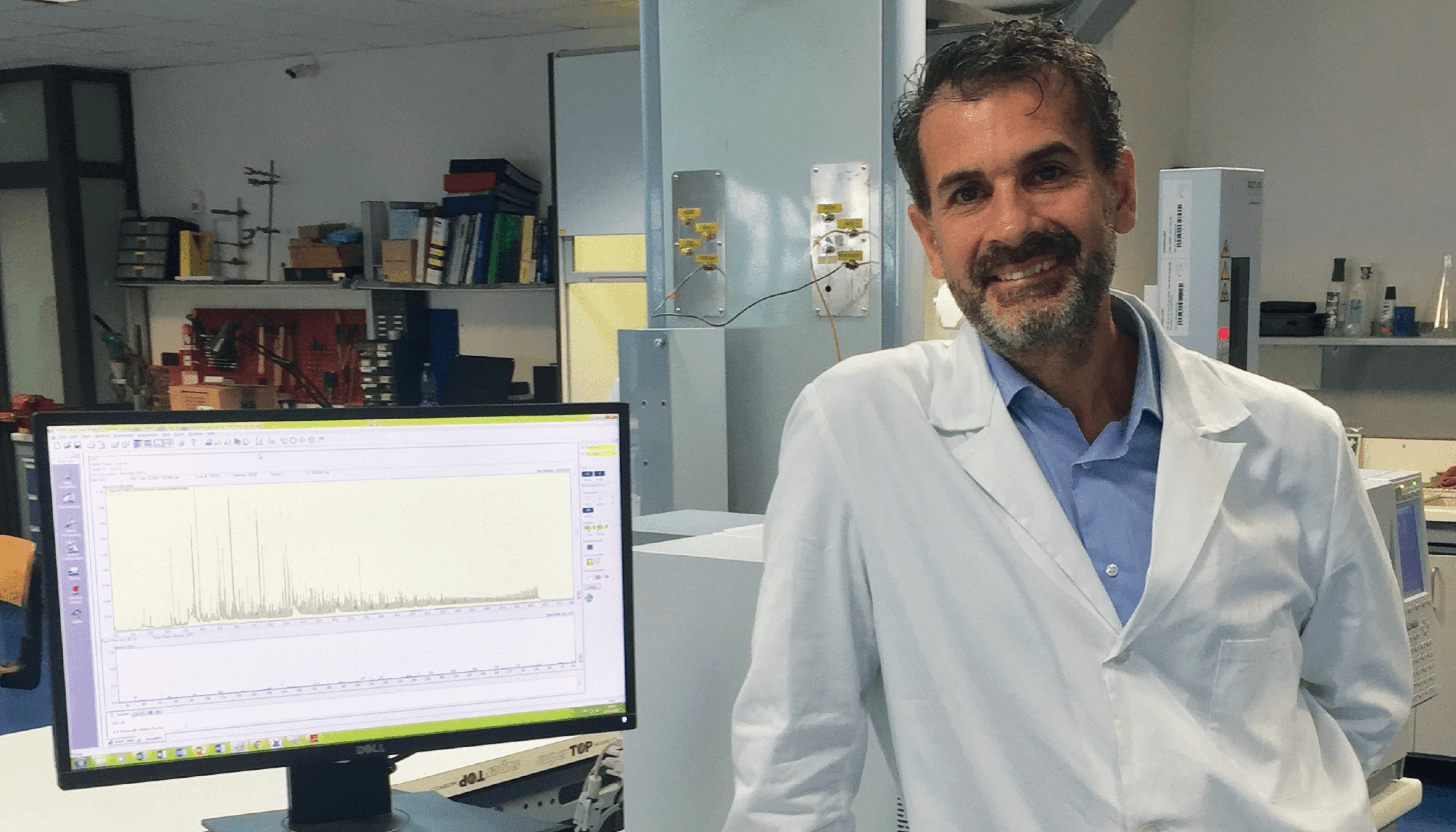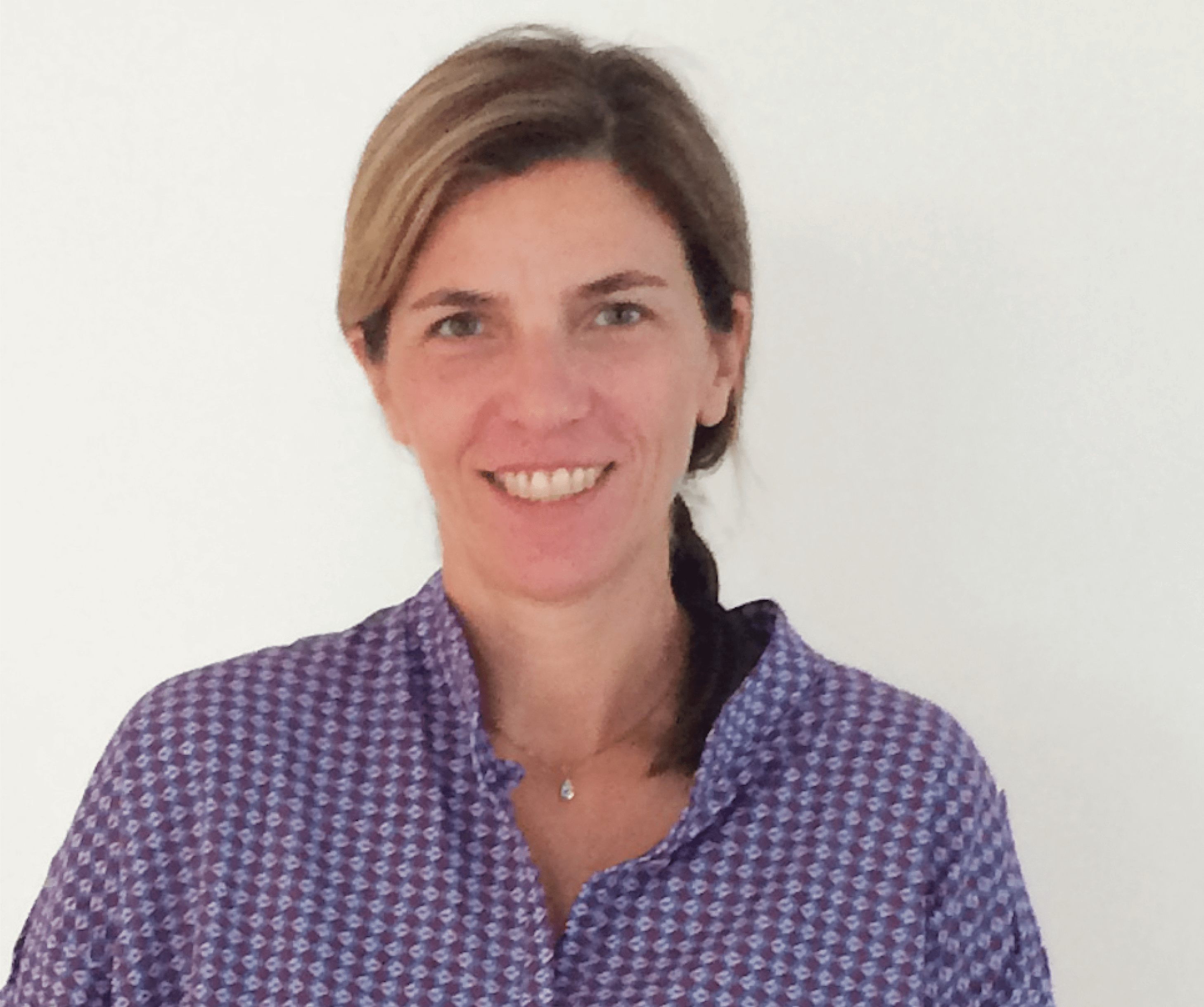Kevin Schug
My research focuses on the development of new methods for monitoring environmental samples affected by unconventional gas and oil operations, evaluating different oilfield wastewater treatment technologies, and bioanalytical approaches for clinical and pharmaceutical applications. As the Shimadzu Distinguished Professor of Analytical Chemistry in the Department of Chemistry & Biochemistry at the University of Texas Arlington (UTA), I use what I would call “cool toys” to solve these problems – gas, liquid and supercritical fluid chromatography instruments coupled with MS and vacuum ultraviolet spectroscopy, with an emphasis on online coupling and multidimensional separations.

Giorgia Purcaro
I was appointed the post of Professor of Analytical Chemistry at the Gembloux Agro Bio Tech Department of the University of Liége, Belgium, in 2018, following doctoral and postdoctoral specialization in hyphenated chromatographic techniques (under the supervision of leaders such as Phil Marriott, Luigi Mondello and Peter Tranchida), numerous international experiences, and the receipt of prestigious awards. My current research interests include the development of advanced multidimensional and comprehensive chromatography techniques, as well as miniaturized sample preparation approaches for food quality and safety applications.

Peter Tranchida
I’m an Associate Professor in Food Chemistry at the University of Messina, with a passion for advanced GC-MS methods – particularly GC×GC-MS. Analytical objectives in food analysis are highly variable, ranging from pure curiosity on food composition to evaluations of quality, authenticity and safety, making these methods essential. On the GC×GC-MS front, I’ve contributed to a wide range of instrumentation-, optimization- and application-based studies. In recent years, I have focused a lot on novel forms of modulation.

Giorgia: From my point of view, GC and GC×GC are both now “mature” techniques, and their growth curve is beginning to plateau. State-of-the-art GC machines are of very high quality. In particular, MS detectors are improving in performance exponentially, making GC and GC×GC coupled with MS a powerful and versatile tool in many areas. Some improvements are still necessary, or desirable, such as new column stationary phases, better inertness of connections, and more intuitive hardware, but I doubt these will have a revolutionary impact on the field.
One current downside is the still-limited acceptance of GC×GC as a routine technique. It is still seen as mainly suited for research purposes, but it is actually mature and robust enough to be used more routinely. However, the power of GC×GC is actually essential for very challenging applications, and this will hopefully help boost its acceptance and use.
Peter: I’d agree with Giorgia that GC is a rather mature technology – and I’d say it’s poised to produce a profusion of compact devices with low energy consumption, mostly within the context of GC-MS. The role of MS is becoming understandably dominant, and it occupies a central role in our expanding molecular-level knowledge of the world.
Apart from the introduction of GC×GC itself, there have been many noteworthy developments, including fused-silica capillary GC, Deans Switch multidimensional GC, improved speed, introduction of new stationary phases, increased power and decreased device size (in some cases miniaturized), novel injection approaches, new detectors, and many more. I believe that GC×GC, fused-silica capillary GC and GC-MS evolution have been particularly important.
Kevin: It feels like the GC industry is currently trying to reinvent itself with more compact and user friendly systems. Indeed, there have been exceptional developments in detector power, but front-end automated sample preparation systems are becoming more advanced and capable, as well. Now more than ever, we have more choices of different accessories and detectors to upgrade GC systems and make them more capable and more powerful.
Peter: I work primarily with GC×GC – a technique that grabbed my attention from my first encounter with it. Now,having witnessed its evolution over almost two decades, I’m fortunate enough to work with five to six of these systems, using different modulators and MS detectors, to support my everyday research.
Such approaches are, of course, essential for expanding our understanding of the world we live in at a molecular level. However, focusing more closely on foods, as I do in my own research, novel sample preparation approaches and the application of GC×GC-MS are now allowing us to perform in-depth investigations into contaminants (at parts per billion or trillion levels). We are now able to pinpoint compounds responsible for specific aromas, enable fine optimization of industrial processes, identify food components potentially beneficial for human health, monitor storage condition effects, and more.
Giorgia: GC×GC has been the most revolutionary invention in the field since the introduction of capillary columns, providing a new level of understanding of GC-amenable samples. And it has played an important role in my career. I first experienced GC×GC as a PhD student and have not strayed from it since – even when I had to build my own modulator because of budget restrictions. From then until now, it’s given me great satisfaction in terms of my personal career and research advancements. In fact, GC×GC has altered many paradigms in the field of food analysis.
Two main examples from my research are the application of GC×GC to fingerprinting the volatile profile of foods, opening the door to omics disciplines in this space for quality and authenticity control, and the detailed characterization of food contaminants. In the latter case, GC×GC is crucial for elucidating mineral oil saturated hydrocarbons and alkylated mineral oil aromatic hydrocarbons (MOSH and MOAH) – key food contaminants that can be differentiated only by using this technique.
Kevin: When I was a graduate student, I had the opportunity to decide whether my graduate work would focus on GC or highperformance liquid chromatography (HPLC). I chose HPLC, because my assessment at that time was that it was a much more exciting field in which to focus. Indeed, LC-MS continued to be strong and still is today. It was many years before GC became a regular part of my research activities. However, focusing on the environmental impact of unconventional oil and gas extraction in Texas provided many opportunities for methodological innovation. Today, we’ve developed a suite of methods for measuring water contaminants, such as the use of headspace GC and GC-MS for the monitoring of volatile and semi-volatile organic compounds in groundwater and treated oilfield wastewater. These methods have been developed within my team using combined targeted and untargeted analysis conditions – made necessary by the complexity of oil samples and tendency to use proprietary chemicals in unconventional oil and gas extraction.
With Elia Psillakis
In my role as Professor of Aquatic Chemistry at the School of Environmental Engineering of the Technical University of Crete, Greece, I develop new and rapid sample preparation methods to detect “emerging” organic pollutants, and monitor their fate in natural and treated water. In my lab, we do not develop new materials and extracting phases for sample preparation. Instead, we push methods to extremes, speeding up extraction and forcing analytes to take the “fast lane.” To develop such methods, we first need to understand the underlying processes, so we are also very much involved in the fundamentals behind sample preparation and microextraction, in particular.
Several meaningful and practical developments have been introduced to GC in the past decades. In parallel with this (r)evolution in analytical instrumentation, sample preparation is also blooming - although perhaps unnoticed. Different sample prep technologies are mature and still far from their decay phase, meaning the science underlying them is well understood and their initial faults have been removed, or are being reduced by ongoing development. Currently, a number of sample preparation methods are in their growth phase, and we should expect to see an explosion in new techniques and their widespread use in the near future.
We all need to conduct some form of sample preparation before GC, and this creative science relies on rapid, selective, sensitive and powerful analytical tools that are practiced sustainably. Accordingly, current advances opt for the use of “green” procedures that exclude or minimize solvent use and energy consumption, as well as taking many other, similar factors into consideration.
Though we realize the criticality “of” sample preparation, there is still a way to go in realizing the criticality “in” sample preparation. If mistakes are made, we cannot backtrack and fix them, and some errors can also go unnoticed. Sample preparation looks easy but its internal workings and the fundamentals of extraction, involving natural and frequently complex samples, are much less developed and understood when compared with the physicochemically simpler systems, such as GC. Overlooking the complexity of sample preparation is critical.
Both the fundamental scientific problems and the challenges we face are complex and often require crossdisciplinary solutions. Technological developments will continue to happen but, to facilitate real progress, we need to break down the single-discipline silos of separation science and embrace trans-disciplinary collaboration. As attention focuses ever more intently on complex worldwide problems (the so-called “nexus” of challenges around food, energy, water, and the environment), it makes increasing sense for us to combine forces and address these problems.
As for the future, I wish (rather than expect) to see the approach of “open source” and “open science” in separations – and sample preparation in particular. Within the context of citizen science, I hope to see active public engagement in research, data monitoring, and collection. Until then, our community is – thankfully – more than aware of the criticality of sample preparation. This is highlighted by the EuChemS Sample Preparation Task Force, which I have the honor of leading.

Giorgia: The Riva meetings are, for me, a place of inspiration and confrontation, where the most passionate and advanced scientists gather together to exchange ideas and opinions. The pleasant, cozy environment of Riva del Garda facilitates networking and professional exchanges, making these meetings unique! After every meeting, I come back to my lab with a bunch of new ideas to explore.
Kevin: The ISCC meeting in Riva del Garda, Italy, was the first international conference I ever attended. It was my PhD advisor’s favorite, and it quickly became mine as well. Riva is the premier international meeting for all things GC, for capillary LC, for microscale and electrically-driven separations, and even for multidimensional separations — not just GC×GC, but LC×LC, as well. One of my proudest moments was being able to introduce the scientific community to the vacuum ultra-violet (VUV) detector for GC for the first time at the 2012 Riva del Garda meeting.
Peter: I am involved in the general organization of the GC×GC Symposium. Apart from enjoying the beauty of the location and meeting with long-time friends, I usually leave Riva with an abiding admiration for the best presenters and presentations. It’s a very important venue for exchanging ideas about the whole field.
Peter: The impact of the coronavirus pandemic on the economy is extreme, including the cancellation of Riva 2020. In fact, many events around the world are being postponed by a year. I would like to think of the next “RIVA” being a greatly attended event, with an enhanced pleasure of just being together as a community and truly appreciating the wonderful location. I hope to see the general scientific community intensely engaged in avoiding a similar situation in the future, and also united in facing the environmental challenges awaiting us in the future.
Kevin: It’s difficult to forecast the future of the event with this year’s cancellation. The ongoing pandemic will change many things, including a large number of conference cancellations and postponements. But, we still have the US meeting in Fort Worth 2021 to look forward to, and hopefully we’ll be back in Riva for 2022!
Giorgia: The cancellation of Riva is an unfortunate situation, which will have a negative impact on exchange both among scientists, and between scientists and industry. The relaxed environment of Riva del Garda has always guaranteed fruitful interactions, while the disconnect offered by leisure time outside the conference allows attendees to focus totally on networking while attending the event itself. The technology and connectivity available to us today may compensate in part for this missed opportunity, but it will not be the same. In this period of uncertainty, I think the community will act to strengthen our virtual connections until we can meet again.
Giorgia: In my opinion, two main factors continue to cause a bottleneck in the field: sample preparation and data handling. I’d like to see more effort on automation and miniaturization of sample preparation at a reasonable cost, to match and complement the high performance achievable with modern GC instruments. On the other side, data handling still remains an unavoidable hurdle. Algorithms need to be improved to make integration more robust, and, at the same time, they should provide support to extract useful information from the overwhelming amount of data generated by the multidimensional and ultra-sensitive techniques available today.
Peter: I expect further major developments in MS and sample preparation, but fewer in chromatography. Benefits will spring from the use of faster, more compact and environmentally friendly automated machines. The work of analysts will be made much easier, along with decreasing emphasis on their role in operating the instrumentation.
Kevin: I see the merging of more advanced data science techniques and analytical measurements. Given the power and choices of front-end sample preparation, high-efficiency chromatographic separations, and back-end detection, researchers have a myriad of means to create methods to differentiate samples of interest or perform ultratrace analysis. Tools like machine learning and artificial intelligence will also become more routine in chromatography systems. GC can profile volatile and semi-volatile compounds in just about any sample; as Giorgia says, we need more and more robust and user-friendly means to process data, and I think those tools are emerging quickly.





